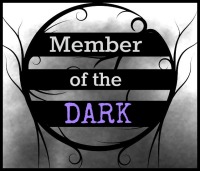
Dungeons and Dragons
Creating monsters for a fantasy world can be done in a variety of ways. None of them are better than the others, so the author can use the one that suits them best. It doesn’t even have to be one method and that’s all. You can have monsters coming from all styles of creation, which is probably the best tactic. Mixing it up creates a lush and deep world where there is familiarity and new. Keeps the audience on their toes.
Now, what are the methods?
- Mythology/Folklore– This is the simplest one to explain, but can be the hardest one to pull off. You have to do research here. Plenty of monsters have been created throughout human history, so there will inevitably be one that can fit what an author is looking for. The trick is to get it right because these come with pre-existing expectations and knowledge. You can only change these monsters so much before you’ve made something entirely new and piss off anyone who is a fan. There’s also the issue of some monsters having multiple forms and versions, so you need to research the various aspects if you want to get it completely right.
- Mother Nature Frankenstein– Creating monsters this way will take some time and you may need to keep notes. The basic concept is that you take pieces and abilities of real animals then mash them together. This is probably how many mythological creatures came about like the Peryton (winged stag) and centaurs (human/horse combo). Again, it seems simple, but there is a danger. Some authors may get too into adding parts and creature too big of an amalgamation. The best way to use this method is to have a reason for each part and keeping it at 1-2 solely for aesthetic reasons. Everything else should serve a purpose. This makes sense because real animals tend to evolve adaptations that are useful instead of simply looking cool.
- Straight from the Mental Depths– There is no mythological or natural origin for what you’ve created. It’s just a strange creature that you came up with. These tend to be made up on the fly, which is why they can be so bizarre. The author starts with a challenge and then designs the monster as soon as it appears. Then, it is altered and changed as the scene is written. Abilities are granted to counter the heroes until the fight has gone on long enough. It’ll be redesigned at least once to accommodate any of these changes. Think of this as being made entirely from clay, which will not dry until the final edits are complete. Personally, I find this to be the most amount of fun and the most difficult out of the 3 methods. You are a lot more likely to go overboard here because there’s no restriction of pre-existing information (mythology) or laws of nature (Mother Nature).
So, those are the 3 main ways that I can think of. I’m sure there are more as well as some subcategories. Still, you’re generally going to have these three because they each have different levels of reality/stability. Mythology has the most since you’re working with creatures that have already been created. Mother Nature is in the middle because you’re making something new, but using real beasts with a touch of magic at times. SFTMD is pure imagination with nothing acting as a solid foundation until the author is done with the design.
The method that one chooses depends on entirely on what they want for the scene and your own comfort levels. This means you can’t declare one method better than the others or shame people for taking what you see as the laziest path. Everyone has their own way of doing things. Some authors aren’t good at making monsters, so they’ll work solely with mythology. Others are great at monsters, but aren’t good at other things. We all have our own strengths and weaknesses, which monster creation can fall into. As long as the beast works for the scene, one shouldn’t complain about its origin.





Great info! I keep seeing people trying to put a new spin on mythological creatures. Like one book, WARM BODIES, where a zombie fell in love. In one book (that I need to revise), I created a monster that came as a result of a curse. I had in mind an old Jonny Quest episode from the 60s where a scientist during an experiment created a monster through an energy overload. I’m not explaining it well. But I have the DVDs of the old series, so watching it inspired me.
LikeLike
Warm Bodies was interesting. Only saw the movie, which gave it a Romeo & Juliet vibe. Thought it gave a nice twist.
LikeLiked by 1 person
When I was planning for The Grimhold Wolf, I knew I wanted to do a werewolf. So like you said, I read a lot about werewolf lore and looked for the things I thought were most interesting. It was fun, actually.
As for different origins of monster, I’m good with mixing and matching, as long as they seem like they could all be part of the world.
LikeLiked by 1 person
That’s the key point. The monsters need to fit. Lots of people forget that.
LikeLiked by 1 person
I love classic monsters, but prefer the mythology to many of the newer Hollywood spins. I’m not above creating my own, but it makes me nervous until actual readers decide they like them.
LikeLiked by 1 person
Hollywood has definitely tinkered a bit too much with some creatures. Vampires and werewolves come to mind immediately.
LikeLiked by 1 person
Yup. Totally agree.
LikeLike
I agree, too. What’s with ‘nice’ vampires?
LikeLike
I don’t mind nice vampires. Since they were once human, it makes sense for some to not be evil. I was thinking more about how some versions are incredibly weak.
LikeLiked by 1 person